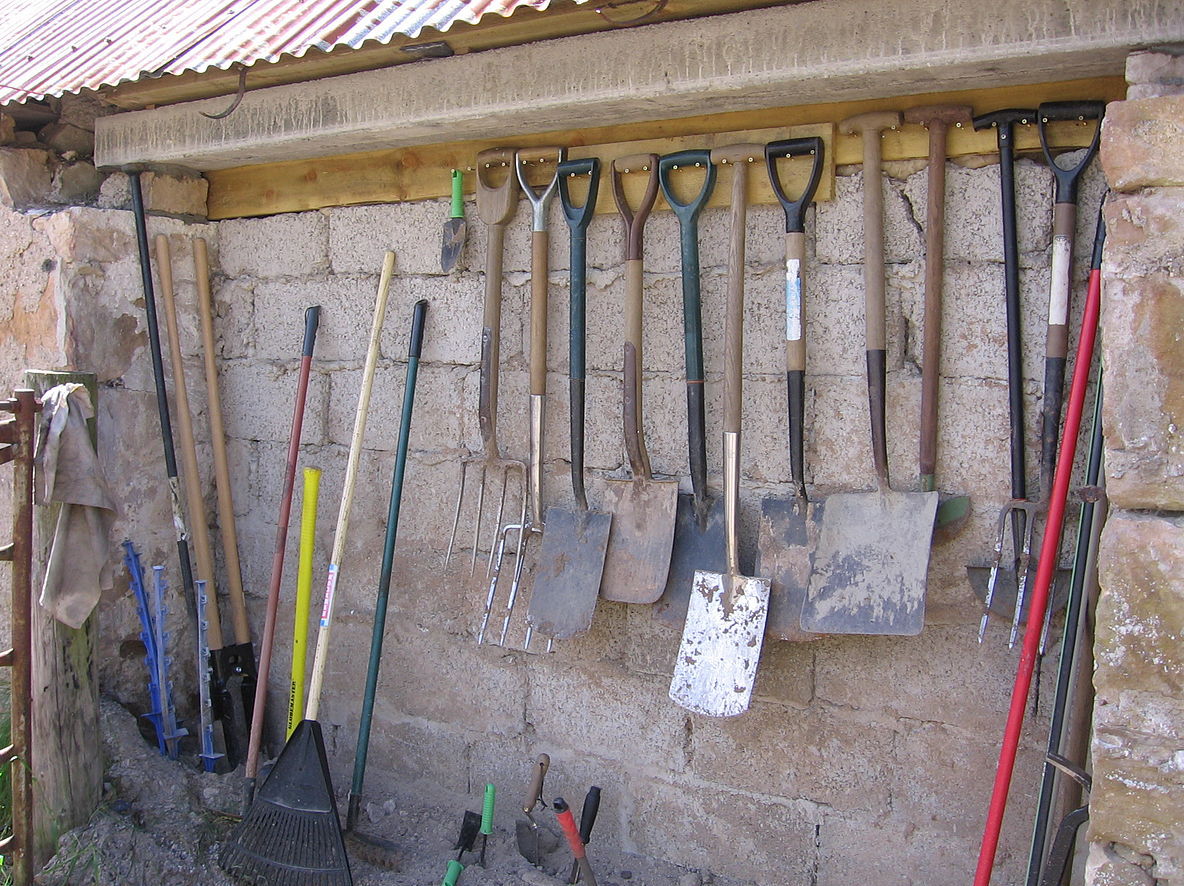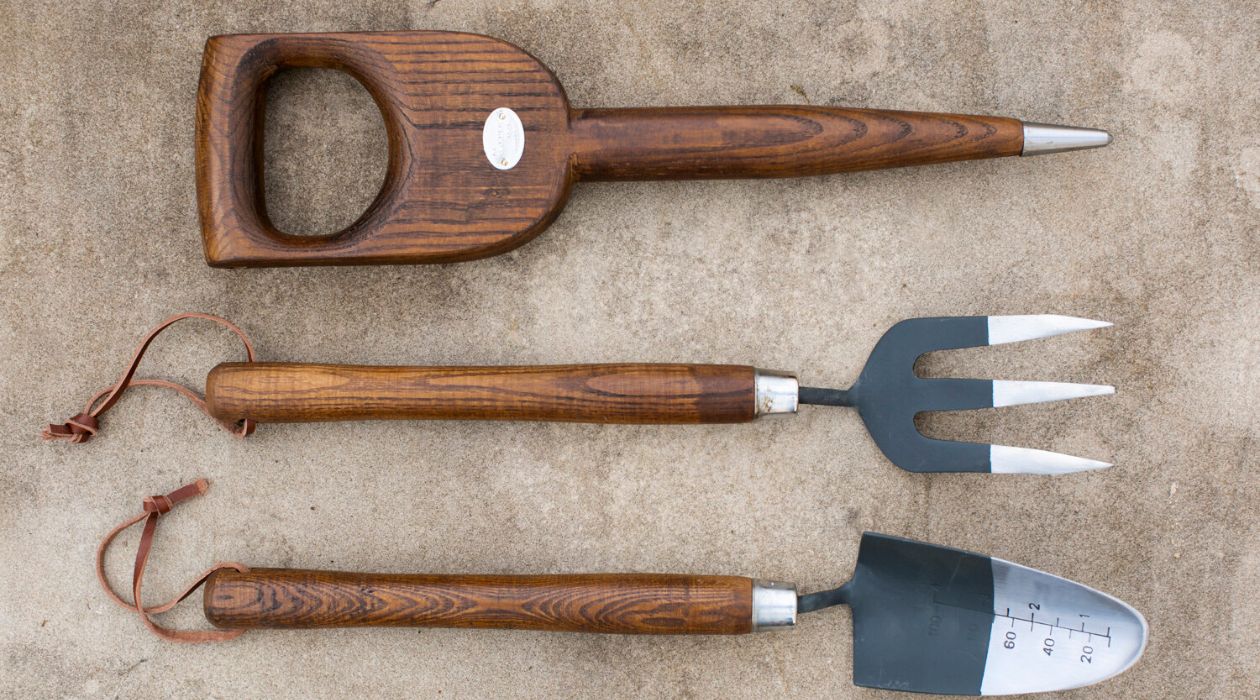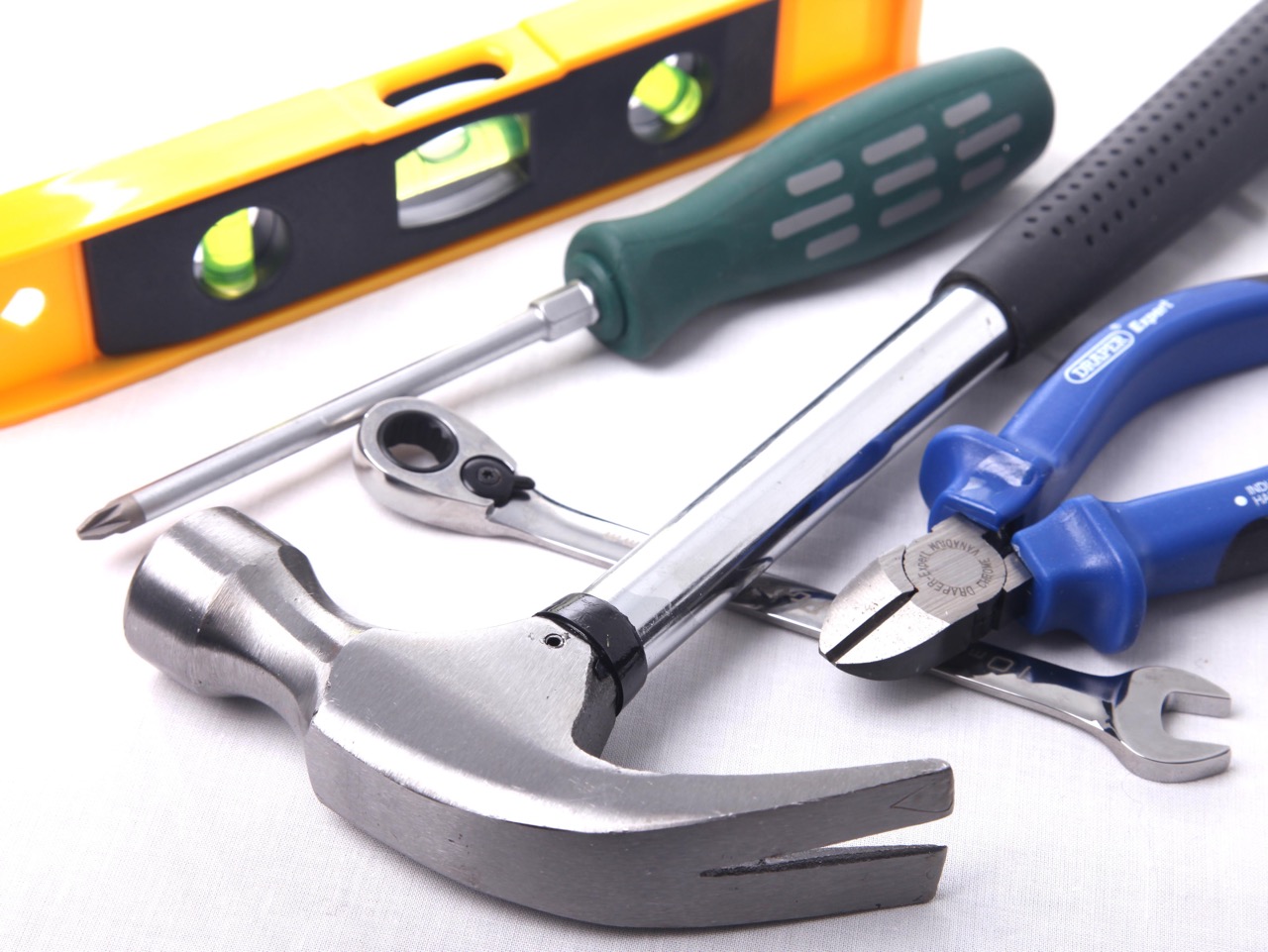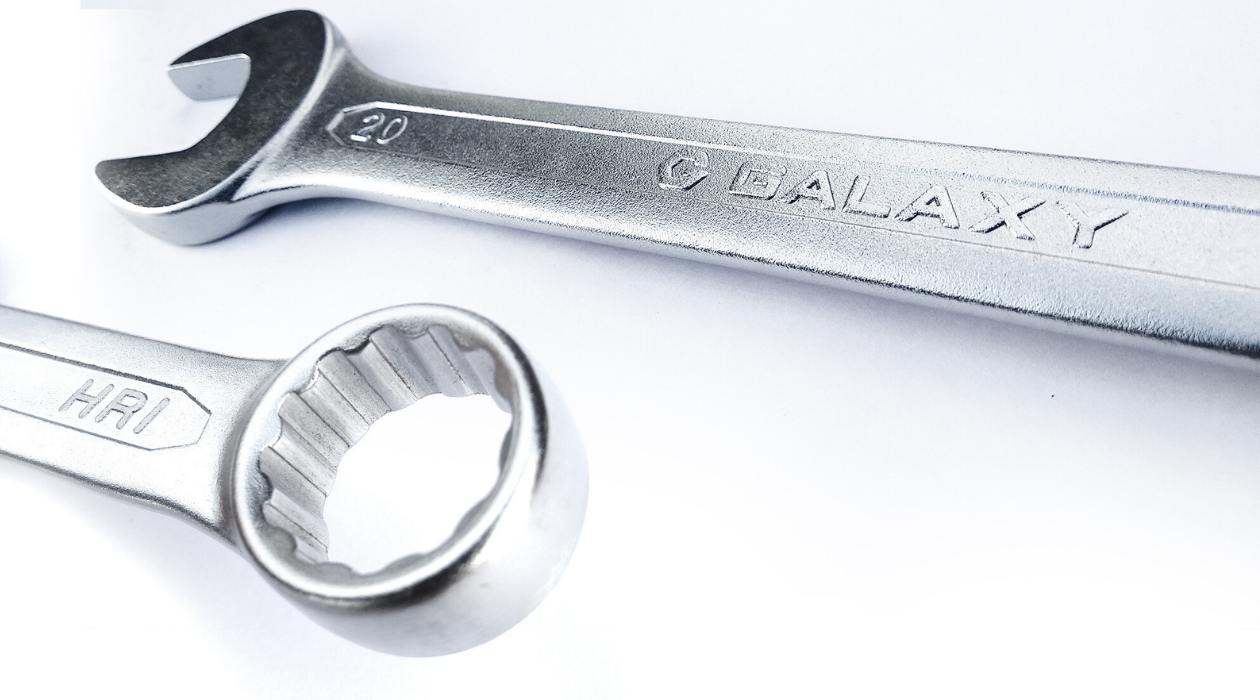

Articles
How To Price Hand Tools
Modified: January 8, 2024
Looking for articles on how to price hand tools? Check out our comprehensive guide to pricing hand tools, featuring expert tips and advice.
(Many of the links in this article redirect to a specific reviewed product. Your purchase of these products through affiliate links helps to generate commission for Storables.com, at no extra cost. Learn more)
Introduction
Hand tools are essential for various industries and professions, ranging from construction and woodworking to automotive and electrical work. As a manufacturer or retailer of hand tools, one of the crucial aspects of running a successful business is pricing your products effectively. Determining the right price for hand tools requires a careful analysis of multiple factors that can directly impact your profitability.
In this article, we will explore the key considerations when it comes to pricing hand tools. By understanding these factors and implementing effective pricing strategies, you can optimize your profitability and stay competitive in the market.
Finding the right price for your hand tools requires a balance between covering your costs and ensuring your products are attractive to customers. Let’s dive into the factors that should be considered when determining the pricing of hand tools.
Key Takeaways:
- Effective pricing of hand tools involves considering material costs, labor expenses, and competitor analysis. By balancing these factors, businesses can optimize profitability and attract customers with competitive pricing strategies.
- Strategic seasonal pricing adjustments, promotions, and discounts play a crucial role in maximizing sales and adapting to market dynamics. Understanding target market segments and implementing diverse pricing strategies are essential for long-term business success.
Factors to Consider when Pricing Hand Tools
Pricing hand tools involves taking into account several factors that can influence the final price you set for your products. By carefully considering these factors, you can ensure that your pricing is fair, competitive, and profitable. Here are some essential factors to consider:
- Cost of Materials: The cost of materials used to manufacture hand tools is a significant factor in determining the pricing. This includes the cost of raw materials such as steel, wood, or plastic as well as any additional components or parts required for the tools. It’s crucial to calculate the material costs accurately to ensure that they are covered in the final price.
- Labor Costs: The labor involved in manufacturing hand tools is another important factor to consider. This includes the wages or salaries of the workers involved in the production process. The complexity of the tool and the time required for manufacturing will impact labor costs. It’s essential to factor in labor costs to ensure that you can cover these expenses and achieve a suitable profit margin.
- Overhead Expenses: Overhead expenses play a significant role in determining the pricing of hand tools. This includes costs such as rent, utilities, insurance, marketing, and administrative expenses. These overhead expenses need to be allocated properly to each unit of the hand tools to ensure that they are accounted for in the final price.
- Competitor Analysis: Analyzing the pricing strategies of your competitors is crucial in setting the right price for your hand tools. Research and compare the prices of similar tools offered by your competitors. This will give you an insight into the market pricing trends and help you position your pricing strategy accordingly. It’s important to strike a balance between offering competitive prices and maximizing your profit margins.
- Target Market Segment: Understanding your target market segment is essential when pricing hand tools. Different market segments may have varying price sensitivities and preferences. Consider the purchasing power and willingness to pay of your target customers. Conduct market research to gain insights into the price range that is acceptable to your target audience.
By taking these factors into account, you can ensure that your pricing strategy is well-balanced and reflects the value of your hand tools. Stay tuned as we explore more key aspects of pricing hand tools in the upcoming sections.
Cost of Materials
The cost of materials is a crucial factor when pricing hand tools. It directly impacts your overall production costs and ultimately affects the price you set for your products. Understanding and accurately assessing the cost of materials is essential for maintaining profitability and competitiveness in the market.
When it comes to hand tools, the cost of materials varies depending on the type of tool and its components. For example, if you manufacture hand tools made of steel, the cost will depend on the current market price of steel. Similarly, if you use wood or plastic in your tools, the cost will vary based on the price of these materials.
It’s vital to have a reliable source for procuring your materials at reasonable prices. Establishing relationships with trusted suppliers can help you negotiate better deals and maintain a consistent supply of quality materials while keeping costs under control.
Additionally, it’s crucial to accurately estimate the amount of materials required for each hand tool. This involves considering factors like the dimensions, weight, and specifications of the tool. By calculating the material requirements accurately, you can avoid wastage and minimize excess inventory costs.
When determining the cost of materials, it’s important to consider factors beyond the raw materials themselves. This includes any additional components or parts that are needed to manufacture the hand tools. These components may also have their own associated costs, and it’s important to account for them when pricing your products.
In some cases, the cost of materials can fluctuate due to market conditions or changes in supply and demand. It’s important to keep track of these changes and adjust your pricing strategy accordingly. Regularly monitoring the cost of materials and staying updated with market trends will help you make informed pricing decisions.
By considering the cost of materials carefully, you can ensure that your pricing reflects the expenses incurred in the production process. Balancing these costs with your desired profit margin is essential for maintaining profitability and offering competitive prices to your customers.
Labor Costs
When pricing hand tools, one crucial factor that must be taken into account is the labor costs involved in their production. Labor costs include the wages or salaries paid to the workers involved in manufacturing the hand tools. It’s important to accurately assess and allocate labor costs to ensure that they are covered in the final price.
The complexity of the hand tools and the time required for manufacturing them directly influence labor costs. Tools that require intricate assembly or detailed craftsmanship may require more skilled workers, resulting in higher labor costs. On the other hand, simpler tools may involve less labor and therefore have lower labor costs.
Estimating labor costs involves determining the number of workers involved in the production process and calculating their wages or salaries. It’s essential to consider both direct labor costs (workers directly involved in manufacturing) and indirect labor costs (supervisors, quality control technicians, etc.). Additionally, any training or benefits provided to the workers should be factored into the overall labor costs.
Efficiency and productivity of the workers also play a role in determining labor costs. If your production process is optimized and your workers are highly skilled and efficient, it can reduce the labor hours required to manufacture each hand tool. This can help lower labor costs and improve profitability. Regularly assessing and improving the manufacturing process can contribute to cost reductions and competitive pricing.
When pricing hand tools, it’s important to strike a balance between covering labor costs and achieving a suitable profit margin. If labor costs are too high, it may result in uncompetitive pricing, making it difficult to attract customers. On the other hand, setting labor costs too low may lead to compromised quality or dissatisfied workers. Finding the right balance is essential for both profitability and customer satisfaction.
Monitoring labor costs and ensuring they are kept under control is crucial for long-term business success. Regularly reviewing and adjusting labor costs based on market conditions, productivity improvements, and wage fluctuations will help you maintain competitiveness while ensuring fair compensation for your workers.
By carefully considering labor costs, you can accurately factor them into your pricing strategy, ensuring that your hand tools are priced competitively while covering your expenses and maintaining profitability.
Overhead Expenses
When pricing hand tools, it is essential to take into account the overhead expenses associated with your business operations. Overhead expenses are indirect costs that are not directly tied to the production or manufacturing process but are necessary for running your business.
Overhead expenses can include rent or lease costs for your facility, utilities such as electricity and water, insurance premiums, marketing and advertising expenses, administrative costs, and other general expenses incurred in the day-to-day operation of your business. These expenses are not easily allocated to individual units of the hand tools but need to be accounted for to ensure they are covered in the final price.
Determining the exact portion of each overhead expense that needs to be allocated to each unit of hand tools can be challenging. However, a common method is to calculate the total overhead expenses for a specific period (such as a month or a year) and divide it by the total number of units produced during that period. This will give you a per-unit cost that can be added to the direct costs of materials and labor.
It’s important to regularly review and assess your overhead expenses to identify areas where costs can be reduced or optimized. For example, you may be able to negotiate better lease terms for your facility, find more cost-effective marketing strategies, or implement energy-saving measures to lower utility costs. By managing your overhead expenses effectively, you can improve your profitability and offer competitive prices for your hand tools.
Moreover, it’s crucial to consider the value that these overhead expenses bring to your business. Investments in marketing activities or customer support may result in increased brand awareness and customer loyalty, which can have a positive impact on sales and profitability. Understanding the return on investment for these overhead expenses can help you determine the appropriate allocation in your pricing strategy.
Regularly reviewing and analyzing your overhead expenses will ensure that your pricing strategy covers all necessary costs while leaving room for profit. It is advisable to monitor and adjust your overhead expense allocation periodically to reflect changes in market conditions, streamlining operations, or implementing cost-saving measures.
By effectively managing your overhead expenses and factoring them into your pricing strategy, you can ensure that your hand tools are priced to cover all associated costs while remaining competitive in the market and maintaining profitability.
Read more: How To Market Hand Tools
Competitor Analysis
In the competitive market of hand tools, conducting a thorough competitor analysis is crucial to pricing your products effectively. By understanding the pricing strategies of your competitors, you can position your hand tools in the market and determine a competitive and profitable price point.
Begin by identifying your direct competitors – companies that offer similar hand tools to the same target market. Research their product offerings, pricing structures, and overall market positioning. Explore their websites, online marketplaces, and physical stores to gather information on the prices they charge for comparable tools.
When analyzing your competitors’ pricing strategies, consider the following:
- Pricing Range: Take note of the price range your competitors offer for similar hand tools. Identify the upper and lower limits, as well as any pricing tiers based on features or quality.
- Promotions and Discounts: Examine whether your competitors frequently offer promotions or discounts on their hand tools. Note the types of promotions they run, the discount percentages, and the duration of these offers.
- Value Proposition: Assess the value propositions of your competitors’ hand tools. What unique features or benefits do their products offer? Understanding the value that customers perceive in competing tools can help you position your own products and pricing accordingly.
- Brand Reputation: Consider the brand reputation and customer loyalty associated with your competitors. Strong brands with a loyal customer base may be able to command higher prices, while newer or less established brands may need to offer more competitive pricing.
By gathering data on your competitors’ pricing strategies, you can gain valuable insights into the market dynamics, pricing trends, and customer expectations. This information will help you make informed decisions when it comes to pricing your hand tools.
When setting your prices, it’s important to strike a balance between being competitive and maintaining profitability. Charging significantly lower prices than your competitors may attract customers initially, but if you’re unable to cover your costs and achieve a reasonable profit, it can be detrimental to your business in the long run. On the other hand, pricing your hand tools significantly higher than competitors without offering additional value may make it harder to attract customers.
By leveraging the information from your competitor analysis and understanding the unique value of your hand tools, you can establish a pricing strategy that positions your products competitively while still capturing the desired profit margin. Regularly monitor your competitors’ pricing strategies and adjust your own pricing accordingly to stay competitive in the market.
Remember, competitor analysis is an ongoing process as market conditions and competitors’ strategies can change. Continuously assess and update your analysis to ensure that your pricing remains relevant and responsive to the market dynamics.
When pricing hand tools, consider factors such as brand reputation, quality of materials, and the specific features and functionality of the tool. Research the market to ensure competitive pricing.
Target Market Segment
When pricing hand tools, it is crucial to understand and consider your target market segment. Your target market refers to the specific group of customers who are most likely to purchase your hand tools. Tailoring your pricing strategy to align with the preferences and purchasing power of your target market will help you attract customers and maximize sales.
Identifying your target market involves researching and analyzing various demographics, psychographics, and behavioral factors. Some key aspects to consider when defining your target market segment include:
- Demographics: Consider factors such as age, gender, income level, education, and occupation. These demographic characteristics can help you understand the purchasing power and specific needs of your potential customers.
- Psychographics: Psychographic factors encompass attitudes, interests, values, and lifestyles. Understanding the psychographics of your target market can provide insights into their preferences, motivations, and decision-making processes. For example, do they prioritize durability, affordability, or brand reputation?
- Geographic Location: Assess the geographic location of your potential customers. Determine whether there are specific regions or areas where there is a higher demand for hand tools. Consider the local market conditions, competition, and economic factors that may affect pricing and purchasing behaviors.
- Market Size and Growth Potential: Evaluate the size and growth potential of your target market segment. Are there enough customers in your target market to support your business? Is the market growing or becoming saturated? Understanding the market potential will help you determine pricing decisions and growth strategies.
By understanding your target market segment, you can tailor your pricing strategy to meet their needs and expectations. Consider the following factors when determining your pricing:
- Purchasing Power: Consider the income levels and disposable income of your target customers. Adjust your pricing strategy to ensure it falls within a range that is affordable and attractive to your potential buyers.
- Value Perception: Assess how your target market perceives the value of the hand tools you offer. Are they willing to pay a premium for superior quality or unique features? Or are they more price-sensitive and focused on affordability? Understanding the value perception will help you position your pricing strategy accordingly.
- Competitor Pricing: Take into account the pricing strategies of your competitors, as they will also target the same market segment. Analyze their pricing and adjust your own prices to remain competitive while considering your target customers’ preferences.
- Market Trends: Stay updated with the latest market trends and consumer preferences within your target market segment. Understand the demand for certain types of hand tools and adjust your pricing to capitalize on these trends.
By understanding and effectively targeting your market segment, you can develop a pricing strategy that resonates with your potential customers. Regularly monitor and evaluate the market dynamics to refine your pricing strategy and stay ahead of the competition.
Pricing Strategies
Choosing the right pricing strategy is crucial when it comes to positioning your hand tools in the market and maximizing profitability. There are various pricing strategies that you can consider, depending on your business goals, target market, and competitive landscape. Here are a few commonly used pricing strategies:
- Cost-Plus Pricing: Cost-plus pricing involves adding a markup to the cost of producing each unit of hand tools. The markup ensures that you cover your costs and achieve a desired profit margin. This strategy is straightforward and provides clarity in pricing, but it may not take into account market demand or competitor pricing.
- Competitive Pricing: Competitive pricing involves setting your hand tool prices based on the prices offered by your competitors. By positioning your prices in line with or slightly below the competition, you can attract customers and remain competitive. However, it’s essential to consider your costs and profit margins to avoid pricing your products too low.
- Value-Based Pricing: Value-based pricing focuses on the perceived value of your hand tools to customers. By understanding the unique features, benefits, and quality of your products, you can set a price that aligns with the value customers place on them. This strategy requires a deep understanding of your target market and effective communication of the value proposition of your hand tools.
- Penetration Pricing: Penetration pricing involves setting your initial prices lower than the competition to gain market share quickly. This strategy aims to attract customers with the lower price point and establish a customer base. Once you have captured the market share, you can gradually increase your prices. However, it’s essential to monitor costs and ensure that the initial lower prices do not result in unprofitability in the long run.
- Price Skimming: Price skimming involves setting high prices initially and then gradually lowering them over time. This strategy is often used for innovative or premium hand tools where early adopters are willing to pay a premium. As the market matures and competition increases, the prices are lowered to attract a wider customer base. Price skimming allows businesses to capitalize on the willingness to pay of early adopters but may limit the initial market size.
Choosing the right pricing strategy for your hand tools depends on various factors including market dynamics, competition, target market preferences, and your business objectives. It’s important to regularly evaluate and adjust your pricing strategy based on market changes, customer feedback, and profitability analysis.
Consider employing a combination of different pricing strategies for different hand tool products or target market segments within your business. This allows you to cater to the diverse needs and preferences of your customers while maximizing overall profitability.
Remember, pricing is not a static process and should be continuously assessed and refined to ensure it remains effective in driving sales, maintaining competitiveness, and achieving desired profitability.
Markup and Profit Margin
Markup and profit margin are essential components to consider when pricing hand tools. They help determine the appropriate selling price for your products while ensuring that your business remains profitable. Understanding how to calculate markup and profit margin will help you make informed pricing decisions.
Markup refers to the amount added to the cost of producing a hand tool to arrive at the selling price. It is typically expressed as a percentage of the cost. The markup covers both the cost of materials and labor as well as overhead expenses and desired profit. For example, if a hand tool’s cost to produce is $10 and a 40% markup is applied, the selling price would be $14 (10 + (0.4 * 10)). The markup represents the additional amount that covers expenses and profit.
Profit margin, on the other hand, is the percentage of profit you earn on each sale. It is calculated by dividing the profit by the selling price and multiplying by 100 to get the percentage. For example, if the selling price of a hand tool is $14 and the cost to produce it is $10, the profit margin would be 40% ((14 – 10) / 14 * 100). The profit margin represents the proportion of profit relative to the selling price.
When determining markup and profit margin, it’s important to consider factors such as market demand, competition, and the perceived value of your hand tools. Setting a higher markup and profit margin may be appropriate for premium or unique products that offer significant value to customers. However, it’s crucial to strike a balance between profitability and market competitiveness to ensure that your pricing remains attractive to potential buyers.
Regularly reviewing your markup and profit margin is essential to monitor the financial health of your business. If your current markup and profit margin do not result in satisfactory profits, you may need to reevaluate your pricing strategy. Consider adjusting your markup or finding ways to reduce costs without compromising on the quality or value of your hand tools.
It’s also important to analyze your sales volumes and costs periodically to identify any changes in market conditions or production expenses. Adjusting your markup and profit margin based on these factors will allow you to maintain competitiveness and profitability in the long run.
Remember, markup and profit margin are not set in stone and can be adjusted based on market conditions, costs, and business objectives. Regularly evaluating and refining your pricing strategy will help you optimize profitability and remain competitive in the market.
Read more: How To Hand Form Body Panels With Hand Tools
Seasonal Pricing Adjustments
Seasonal pricing adjustments are an important aspect of pricing hand tools, as they allow you to adapt your pricing strategy to accommodate the fluctuations in demand and customer behavior throughout the year. By making strategic adjustments to your prices based on the season, you can maximize sales opportunities and optimize profitability.
When implementing seasonal pricing adjustments, consider the following factors:
- Peak Season Demand: Identify the peak seasons or times of the year when demand for hand tools is high. This could be during certain holidays, specific weather conditions, or when certain industries have high activity levels. During these periods, you may be able to set slightly higher prices to capitalize on the increased demand.
- Off-Season Demand: Conversely, there may be times of the year when demand for hand tools is lower. During the off-season, it can be beneficial to lower your prices or offer special promotions to stimulate sales. This can help maintain a steady stream of customers and prevent inventory from sitting idle.
- Market Competition: Analyze how your competitors adjust their prices during different seasons. Monitor their pricing strategies during peak and off-peak periods to ensure that your pricing remains competitive. However, it’s important to strike a balance between competitiveness and maintaining profitability.
- Inventory Management: Take into account your inventory levels and turnover rate when implementing seasonal pricing adjustments. If you have excess inventory during the off-peak season, it may be necessary to offer discounts or promotions to encourage sales and clear out stock.
- Customer Behavior: Consider the purchasing patterns and behavior of your target market during different seasons. Are there specific times of the year when customers are more price-sensitive or willing to spend more on hand tools? By aligning your pricing with customer preferences and behaviors, you can increase the likelihood of making sales.
It’s important to approach seasonal pricing adjustments with a strategic mindset. Pricing too high during peak seasons may deter potential customers, while pricing too low during off-peak seasons may negatively impact profitability. Strike a balance between attracting customers and maintaining profitability to ensure long-term success.
Regularly analyze sales data, market trends, and customer feedback to fine-tune your seasonal pricing adjustments. This will help you identify patterns and optimize your pricing strategy over time. Additionally, consider conducting market research to gain insights into customer expectations and desires during different seasons.
By implementing effective seasonal pricing adjustments, you can leverage market dynamics, anticipate customer preferences, and optimize revenue generation throughout the year. This will contribute to long-term business profitability and sustainability.
Promotions and Discounts
Utilizing promotions and discounts is a powerful pricing strategy to attract customers, increase sales, and create a competitive advantage in the market. By offering special deals and incentives, you can incentivize potential buyers to choose your hand tools over those of your competitors. Here are some key considerations for implementing promotions and discounts effectively:
- Clear Objectives: Clearly define your promotional objectives. Is the aim to increase sales volume, attract new customers, encourage repeat purchases, or promote new product lines? Having specific goals will help you design targeted promotions that align with your business objectives.
- Targeted Audience: Identify the specific audience you want to target with your promotions. This could be new customers, existing customers, or a specific market segment. Tailor your promotions to their needs, preferences, and purchasing habits to maximize their effectiveness.
- Discount Types: Choose the types of discounts that best fit your target audience and business model. Some common options include percentage discounts, dollar amount discounts, buy-one-get-one (BOGO) offers, and free shipping. Experiment with different discount types to see which resonate best with your customers.
- Timing and Duration: Consider the timing and duration of your promotions. Plan your promotions around peak sales periods or specific occasions that are relevant to your target market. Be mindful of the duration to create a sense of urgency and encourage customers to take advantage of the offer before it expires.
- Cross-Selling and Up-Selling: Use promotions and discounts to encourage cross-selling and up-selling opportunities. For example, offer discounts on accessory products or bundle complementary hand tools together at a discounted price. This strategy can increase the average order value and enhance customer satisfaction.
- Loyalty Programs: Implement loyalty programs that reward repeat customers. Offer exclusive discounts, early access to promotions, or special perks to incentivize customer loyalty. This not only encourages repeat purchases but also builds a loyal customer base that can contribute to long-term business growth.
- Clear Communication: Clearly communicate your promotions and discounts through various channels, including your website, social media platforms, email marketing, and in-store signage. Ensure that your messaging is concise, compelling, and highlights the value customers will receive by taking advantage of the offer.
- Track and Analyze Results: Monitor and analyze the results of your promotions and discounts to assess their effectiveness. Evaluate factors such as sales volume, customer acquisition, customer retention, and overall profitability. Use this data to optimize future promotions and identify opportunities for improvement.
Remember to strike a balance between offering attractive promotions and maintaining profitability. Carefully consider the impact on your costs and profit margins when implementing discounts or special offers. It’s important to weigh the short-term benefits of increased sales against the long-term sustainability of your business.
By strategically designing and implementing promotions and discounts, you can create a sense of excitement around your hand tools, drive customer engagement, and ultimately increase sales.
Conclusion
Pricing hand tools effectively requires a comprehensive understanding of various factors that can impact profitability and market competitiveness. By considering the cost of materials, labor costs, overhead expenses, competitor analysis, target market segment, and implementing appropriate pricing strategies, you can optimize your pricing strategy to maximize sales and profitability.
The cost of materials and labor involved in manufacturing hand tools must be accurately calculated to ensure they are covered in the final price. Additionally, overhead expenses should be allocated properly to each unit to reflect the true cost of production. Conducting a thorough competitor analysis is crucial to positioning your pricing strategy against the competition, while targeting a specific market segment enables you to tailor your prices to the preferences and purchasing power of your intended customers.
Choosing the right pricing strategies, such as cost-plus pricing, competitive pricing, value-based pricing, penetration pricing, or price skimming, will depend on your business goals and the unique value proposition of your hand tools. It’s important to strike a balance between attractiveness for customers and maintaining profitability when determining your markup and profit margin.
Seasonal pricing adjustments can help you take advantage of demand fluctuations throughout the year, while promotions and discounts can be implemented strategically to attract customers, drive sales, and build customer loyalty. Regularly monitoring market conditions, competition, and customer preferences will allow you to refine your pricing strategy and ensure its effectiveness over time.
In conclusion, pricing hand tools requires careful consideration of various factors and the implementation of an informed and adaptable pricing strategy. By understanding the costs involved, analyzing the market, and positioning your hand tools effectively, you can achieve a pricing structure that generates sales, maintains competitiveness, and drives long-term profitability for your business.
Frequently Asked Questions about How To Price Hand Tools
Was this page helpful?
At Storables.com, we guarantee accurate and reliable information. Our content, validated by Expert Board Contributors, is crafted following stringent Editorial Policies. We're committed to providing you with well-researched, expert-backed insights for all your informational needs.














0 thoughts on “How To Price Hand Tools”